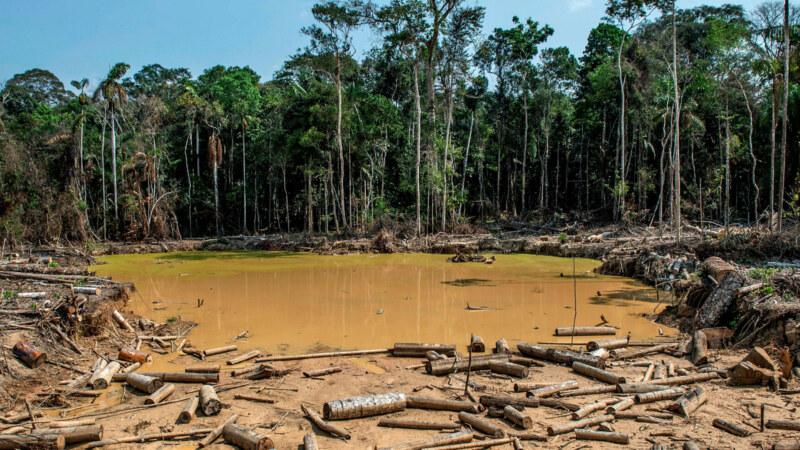The COP15 meeting in Montreal, Canada ended on 19th December 2023 with an agreement on a new global biodiversity framework. The agreement includes targets for:
- managing land,
- sharing resources and sharing benefits (including genetic information),
- sustainable food production,
- transparency by businesses,
- eliminating harmful subsidies, and
- the provision of finance.
While this is a major step forward, there is little likelihood that action on these goals will be more effective than global action on climate change.
Links between biodiversity and climate change
There are two main links between biodiversity and climate change. The first is that modern agricultural practices are responsible for most of the loss of biodiversity and are also a major contributor to climate change. This is largely due to the heavy use of nitrogen fertilizers.
The second link is that biodiversity loss means the reduction in resilience to climate change. For example, mudslides and flooding caused by torrential rains are frequently exacerbated by the removing of vegetation from hillsides and river catchments.
What is biodiversity?
The term “biodiversity” refers to the huge variety of all life on earth – bacteria, plants, animals, humans. Scientists estimate that there are over 8 million species of plants and animals in existence. These species interact with each other in order to survive in ecosystems – networks of interdependent living organisms.
Global biodiversity refers to all living things on the planet. But the term biodiversity is also used to refer to species in specific regions or ecosystems.
What is the problem?
Modern civilization is reducing populations of all living things at an accelerating rate. In the past 50 years, numbers of wildlife have reduced by 69%. Full recovery would take millions of years. According to the Intergovernmental Science-Policy Platform on Biodiversity and Ecosystem Services (IPBES), humanity has altered about 77% of the land and 87% of the ocean.
Millions of species are facing extinction in what is sometimes called the earth’s sixth mass extinction.
Agriculture is responsible for most of the damage to our biodiversity. As the global demand for food has increases, and as the price of food goes down, more and more natural land makes way for crops and pastures. The increasing use of fertilizers and pesticides also have a direct impact on surrounding ecosystems. For instance, the heavy use of nitrogen in fertilizer causes it to enter surface and underground water, killing off natural vegetation.
Intensive agriculture is also degrading the soil, reducing its ability to support food crops.
Why is biodiversity so important?
For ecosocialists, nature is something to be respected and biodiversity is a treasure to be preserved. Of course, human society requires land for shelter and food. The transformation of some natural areas is unavoidable. But with a radically different approach to human development it will be possible to restore much of what has been lost. With conscious planning instead of the blind pursuit of profit, there is no reason why humanity can’t coexist with nature.
But the loss of biodiversity also brings threats to the earth’s ability to support the wellbeing of humanity. The air we breathe and the food we eat depend on the health of these ecosystems.
Pesticides and bees
A well-known consequence of land changes and the use of pesticides is the drop in bee populations. Bees are vital to the pollination and reproduction of many plants and crops, and their dwindling numbers is a warning that current agricultural practices are not sustainable.
Biodiversity loss leads to reducing crop yields and fish catches. Corporations and financial institutions themselves are becoming concerned about the impact on future profits and economic growth.
Inevitably, it will be the poorest on the earth that suffer most. Where regional biodiversities collapse, local ecosystems will not be able to sustain human life, and millions of people will be displaced.
There is no agreed measure on when biodiversity won’t be able to recover from the damage being done. In 2009, the Stockholm Resilience Centre concluded that science was “unable to provide a boundary measure that captures, at an aggregate level, the regulating role of biodiversity.” But what is certain is that the world is steadily moving towards global biodiversity collapse.
What has the world been doing about biodiversity?
Global efforts to address the worsening biodiversity crisis are centered on the Convention on Biological Diversity which came into force in 1993. The agreement includes ecosystems, species, genetic material and technology, biosafety and benefit sharing.
Shamefully, the US is the only member of the United Nations that has not ratified the agreement.
Undoubtedly, part of the reason for the 20 years of minimal achievement has been the failure of politicians to appreciate the importance of biodiversity. It is only in the past few years when popular attention has focused on threatened species and dwindling rain forests that world leaders have tackled the issue with any urgency.
Farmers’ protests in the Netherlands
The effect on food production costs and the impact on farming practices are significant reasons for slow progress. Farmers’ protests in the Netherlands provide a good illustration of the difficult politics of rapid transitions. The protests were about measures to limit the quantity of nitrates applied to the soil, including the buying up of farms to reduce the total area under agriculture. The Dutch government has held firm to its policy, and right-wingers have jumped on to the anti-government bandwagon, drawing support from many farmers.
This conflict shows how difficult a quick transition from a high intensity, high input farming system to a more sustainable system can be, and why powerful government agricultural departments have done little to support the protection of biodiversity.
There has also been conflict over sharing of genetic information, often a source of huge profits to private corporations. Wealthy countries have been resisting calls for sharing from countries which don’t have the technology to research genetics.
Another major sticking point has been finance. The eventual agreement refers to a sum of $200 billion per year, but only $20 billion coming from governments of the global “north”, increasing to $30 billion after 2030. The EU argued that most finance should come from the private sector. African countries in particular were vociferous in their disappointment in this cop-out.
Solutions to biodiversity crisis
Effective protection and restoration of biodiversity can only happen if trillions of dollars are invested in the right places. The refusal of rich countries to make more funding available is a travesty. It is capitalism and the consumption of food grown across the world that is responsible for the growing crisis. Costs should be borne equitably.
But money, although essential, is not enough. In the Netherlands government policies to buy up farms at market prices were not enough for farmers. They believed that they were being singled out unfairly in the fight against climate change, with powerful fossil fuel interests getting away with only minor restrictions.
Governments must show that they are prepared to take on the rich and the powerful. They should also plan on how to reach targets together with those who will be most affected.


